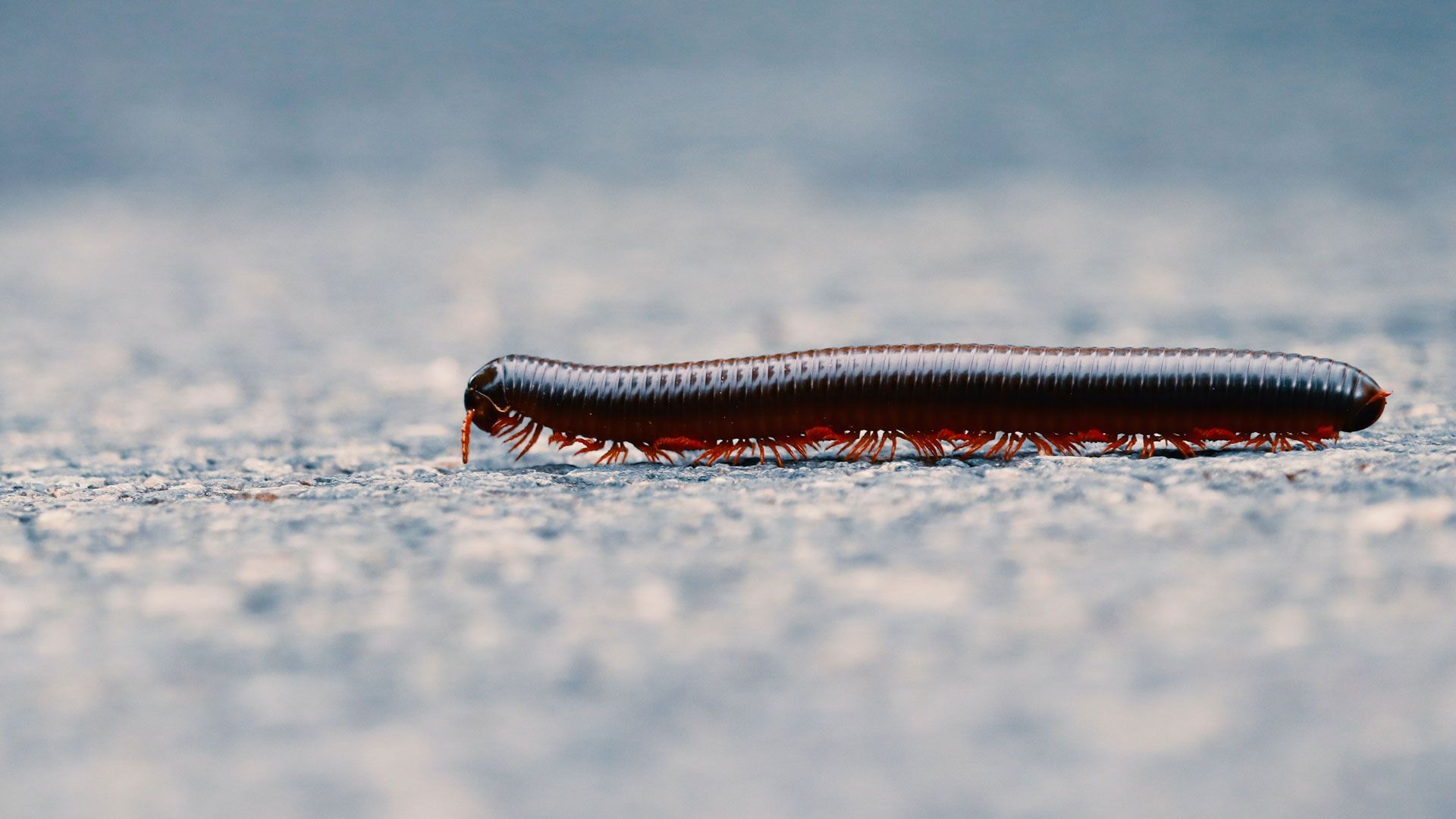Millipede

Appearance
Millipedes are oval, 1-1/2 inches long, segmented with many legs, coiling up when resting or dead. Every millipede has two pairs of legs attached to each apparent body segment. Most millipedes are brown or black, but some species are orange or red.
Habitat
Millipedes are attracted to dark, cool, moist environments that are rich in organic matter such as compost piles, heavily mulched shrub or flower beds, rotting logs, or the soil under logs and stones.
Activity
Millipedes may also migrate in the fall, presumably in search of overwintering sites. hey may crawl indoors in stress periods of hot, dry weather, seeking a moist and a more favorable environment.
What are millipedes?
There's nothing quite like the feeling of waking up in the morning, taking a step out of bed - and being greeted by a millipede. Or two. Or twenty. Millipedes are small, segmented creatures that have two pairs of legs on each segment. They vary in color, but are usually brown or black. Millipedes are often mistaken for centipedes, but they are not the same thing. Centipedes have only one pair of legs on each segment, while millipedes have two.
Are millipedes dangerous?
Millipedes might look a little creepy, but they're actually harmless creatures that are more likely to curl up into a tight ball than to bite you. While they do not bite or sting, some people may be allergic to them. That said, they can sometimes be damaging to gardens and crops, as they feed on organic matter. If you have a millipede infestation, your best bet is to call in a professional pest control service. At Bigfoot Pest Control, we specialize in millipede removal, and we'll be happy to help you get your home or garden back to normal. Thanks for choosing Bigfoot!
Why do I have a millipede problem?
Well, there are a few reasons why your home might be attractive to millipedes. First of all, they're drawn to moist environments - so if your home is particularly damp, that could be why they're hanging around. They also like to eat decaying organic matter - so if you have a lot of rotting leaves or other debris around your property, that could be attracting them. Finally, they're attracted to lights - so if you have porch lights or other outdoor lights that stay on all night, that could be attracting them to your property. They may enter your home through cracks in the foundation or other openings. Once inside, they will hide in basements, crawl spaces, or under sinks and other appliances.
Where will I find millipedes?
They often enter homes in search of food or shelter and can become a pest. Millipedes are also known to eat plants, so they can be destructive to gardens and crops. They often come into homes in search of food or shelter. Millipedes can also cause damage to plants and crops.
How do I get rid of millipedes?
If you have millipedes in your home, it's important to figure out how they're getting in. Check for cracks and gaps in your foundation, windows, and doors. Once you've found the entry points, seal them up with caulk or another appropriate material. The best way to get rid of millipedes is to reduce the moisture in your home. Fix any leaks and remove any sources of standing water. If you have a damp basement or crawlspace, make sure to ventilate it properly to reduce the moisture levels that are attracting them. If you already have a millipede problem, there are some things you can do to get rid of them. One is to vacuum them up. Another is to use a product like boric acid, diatomaceous earth, or food-grade DE. You can also try using a natural predator like nematodes.
Because they're nocturnal and they like to slink around in tight, dark spaces, they can be very hard to track down and eliminate. Bigfoot has been studying the art of the millipede for years, and he'll have no problem tracking them down and stomping them out. Give Bigfoot Pest Control a call for all your pest control needs!
